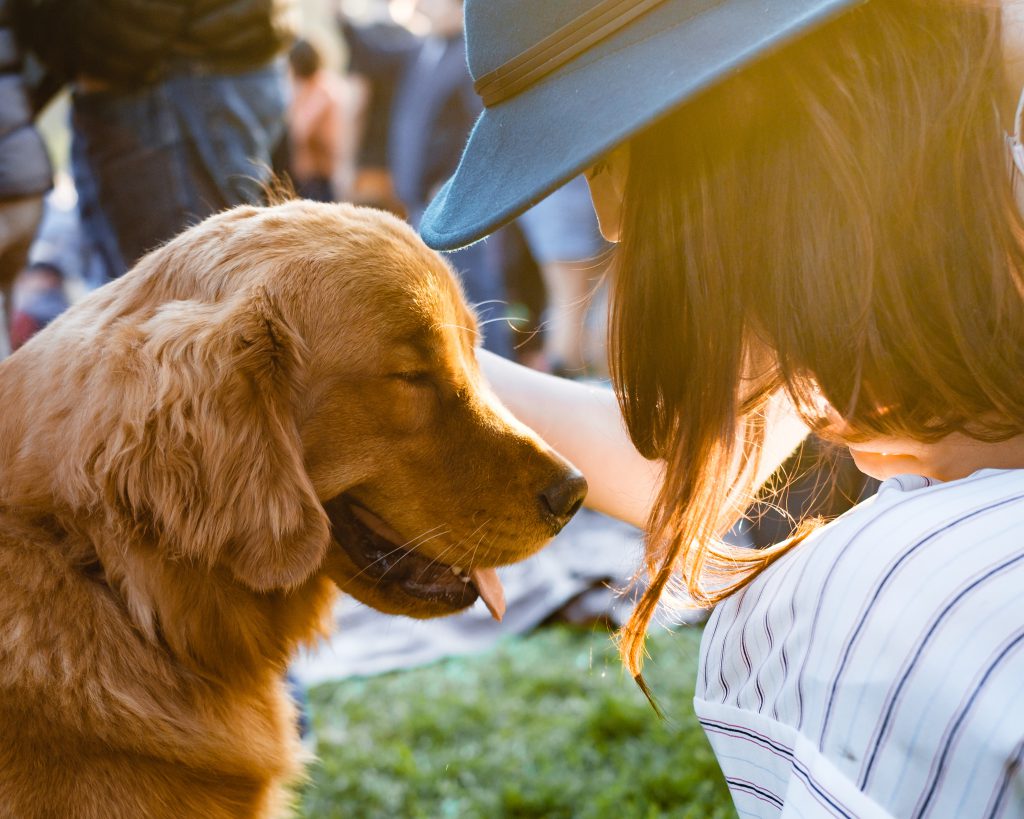In Wagging Pawsibilities we use positive reinforcement and choice-based training and will never use punishment. Our goal is for you and your dog to communicate better and to understand each other. We have yet to come across a behavioral issue that wasn’t fixable by using a gentle and kind approach.
We use choice-based training, which means that we want to help you teach your dog to make the right choice by themselves. By rewarding your dog for making the right choices, your dog is not only engaging their decision-making skills and gaining more patience, but is also going to be more willing and able to obey commands in higher stress situations.
What is positive reinforcement?
Remember how happy you were if your parents gave you a dollar for every ‘A’ on your report card? They made you want to do it again, right? That’s positive reinforcement.
Dogs don’t care about money. They care about praise… and food. Positive reinforcement training uses praise and/or treats to reward your dog for doing something that you want him to do. Because the reward makes him more likely to repeat the behavior, positive reinforcement is one of your most powerful tools for shaping or changing your dog’s behavior.
Why doesn’t punishment work?
Punishment destroys the bond and trust between dogs and humans.
Dogs associate what happens to them with what they see. By applying a punishment only in the presence of another stimuli (other dogs, for example) , this creates a negative association.
Punishment can make an animal fearful.
Punishment may provoke a defensive, aggressive response. Therefore, punishment is extremely bad for dogs that are already timid, shy and fearful.
Punishment can provoke an assertive animal to do a dominant aggressive response.
Punishment that is administered by the human often teaches the dog to avoid the behavior only when the human is there.
Punishment is usually a quick fix and doesn’t teach the dog what to do.
Punishment can be confusing. If our timing isn’t right – the dog might think he is punished for a different behavior than we intended. We can also potentially reinforce unwanted behavior.
Punishment has the potential to increase aggression towards both their owner and the stimuli. For example, if the dog is being punished (jerking on a choke collar) every time he sees another dog, then the dog starts to associate other dogs with pain and punishment and might become more reactive.
Punishment administered with anger is usually ineffective. Not all animals react the same way to punishment. Some shut down, some don’t care…
You usually have to increase the intensity of the punishment to keep it effective.
Rewarding your dog for good behavior sounds pretty simple, and it is! But to practice the technique effectively, you need to follow some basic guidelines.
Whether in our group classes or private training, we will teach you:
- Timing is everything
- Keep it short
- Consistency is key
- When to use positive reinforcement
- Shaping behavior
- Types of rewards
- When to give treats
By understanding positive reinforcement, you’ll see that you’re not forever bound to carry a pocket full of goodies. Your dog will soon be working for your verbal praise, because he wants to please you and knows that, occasionally, he’ll get a treat, too.
Positive reinforcement creates a better everlasting bond and builds relationships that are based on mutual respect and understanding!

